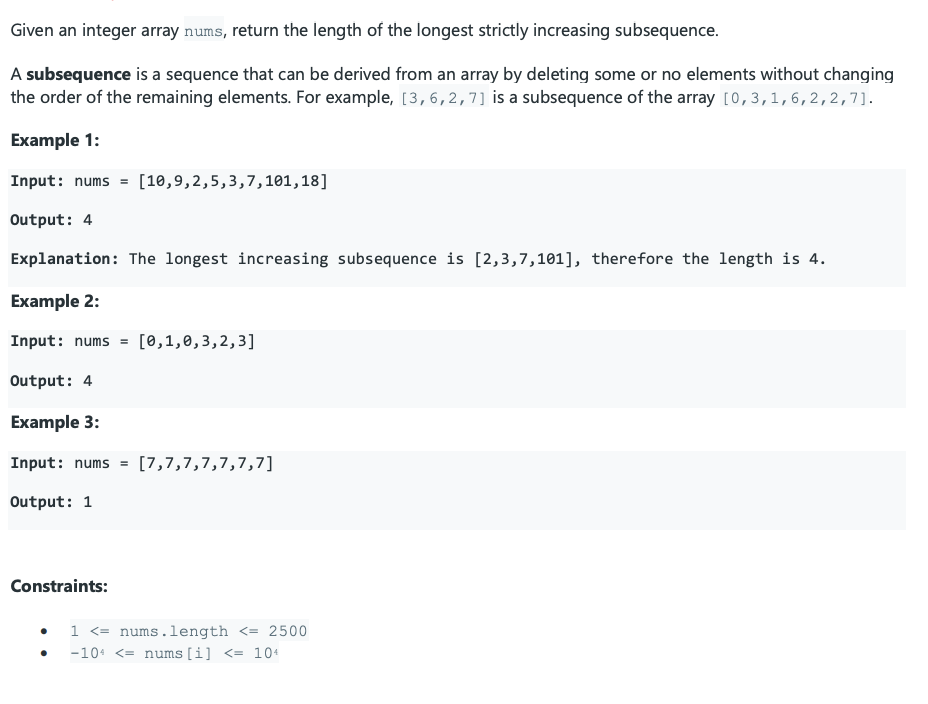Question
Given an integer array nums, return the length of the longest strictly increasing subsequence. A subsequence is a sequence that can be derived from an
Given an integer array nums, return the length of the longest strictly increasing subsequence. A subsequence is a sequence that can be derived from an array by deleting some or no elements without changing the order of the remaining elements. For example, [3,6,2,7] is a subsequence of the array [0,3,1,6,2,2,7]. Example 1: Input: nums = [10,9,2,5,3,7,101,18] Output: 4 Explanation: The longest increasing subsequence is [2,3,7,101], therefore the length is 4. Example 2: Input: nums = [0,1,0,3,2,3] Output: 4 Example 3: Input: nums = [7,7,7,7,7,7,7] Output: 1 Constraints: 1 <= nums.length <= 2500 -104 <= nums[i] <= 104
Step by Step Solution
There are 3 Steps involved in it
Step: 1

Get Instant Access to Expert-Tailored Solutions
See step-by-step solutions with expert insights and AI powered tools for academic success
Step: 2

Step: 3

Ace Your Homework with AI
Get the answers you need in no time with our AI-driven, step-by-step assistance
Get Started



